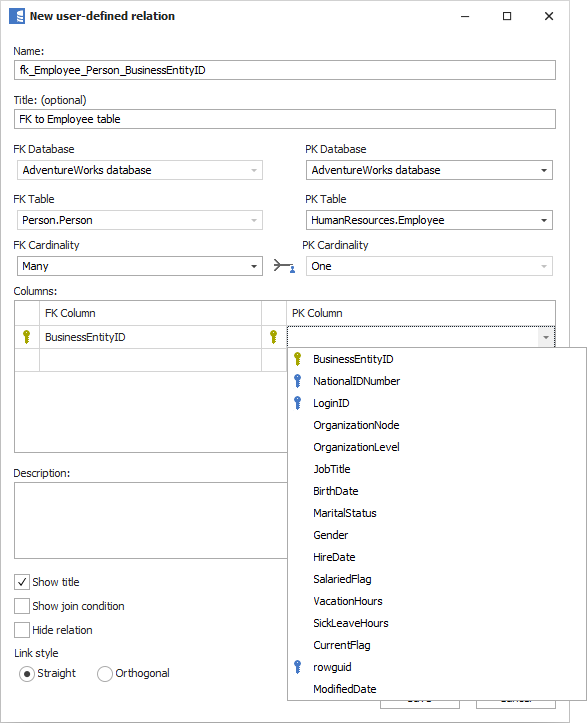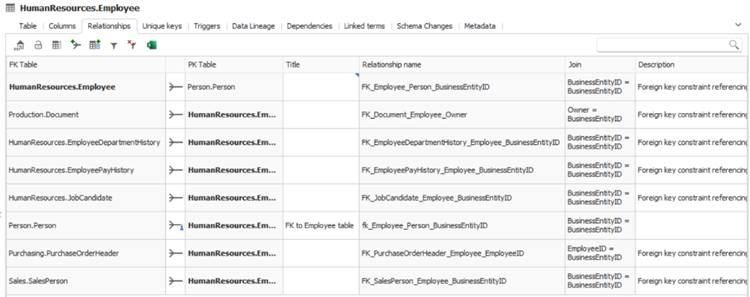Documenting foreign keys (table relations)
Missing logical keys
Dataedo imports foreign keys and displays them in the Relations tab. Sometimes, a logically existing relation is not physically coded in the database. Similar logical constraints may also exist on views. Dataedo allows you to add them both to your tables and views by using user-defined keys.
Adding user-defined relations
Note: User-defined relations exist only in the Dataedo repository and are not populated back to the database schema.
To add a user-defined relation (foreign key) for your table/view, go to the Relations tab and click the Add relation button on the ribbon or from the context menu under right-click.


This will open a key form:
- Name - the name of the key. It is optional, a default name will be set after saving.
- FK Table - foreign table, this field is disabled as you are defining a foreign key for the current table/view. If you need your table to be primary, add the relation from the other table's form.
- PK Table - choose the primary table/view from the dropdown with all the tables and views from your documentation.
- Columns - you must choose from a dropdown one or more pairs of columns that will be part of your foreign key.
- Description - you may provide a description of your relation. This is the same field as in the table of relations.

Once you have provided all the fields, click OK to add the relation. The new relation will be added to the table of relations. Note that user-defined relations have icons with a blue man:


Editing user-defined relations
To edit a key, select the key in the table and click the Edit relation button on the ribbon or from the context menu under right-click.


The same form will open, and you will be able to make changes.
ER Diagrams
Regular or user-defined relations are used to draw Entity Relationship Diagrams.

